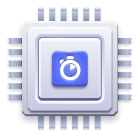Styling the Ecommerce UI Template
On this page
We released React InstantSearch Hooks, a new InstantSearch library for React. We recommend using React InstantSearch Hooks in new projects or upgrading from React InstantSearch.
Default theme structure# A
You can find all themes in styles/themes (including the default theme).
The default theme is structured as follows:
Files:
_globals.css: imports all the required theme files: local CSS files, Tailwindbase,componentsandutilities, Autocompleteclassictheme.base.css: defines all the base rules such as colors (using CSS variables), headings, selection.utilities.css: defines all the custom Tailwind utilities such as text, layout, transition.
Folders:
./components: contains the utilities used for the template component’s CSS classes../widgets: contains the utilities used for the React InstantSearch widget’s CSS classes.
Customize the default theme# A
If you don’t want to create your own theme, you can customize the default theme by changing things such as colors (to match your brand) and text sizes.
Colors#
Customize default theme colors in the base.css file:
1
2
3
4
5
6
7
8
9
10
11
12
13
14
15
16
17
18
19
20
21
/* ---------- Brand */
--color-brand-nebula: #5468ff;
--color-brand-black: #23263b;
/* ---------- Neutral */
--color-neutral-lightest: #f4f4f5;
--color-neutral-light: #d3d4d8;
--color-neutral-dark: #91929d;
--color-neutral-darkest: #4f5162;
/* ---------- Uranus */
--color-uranus-base: #89d9d3;
/* ---------- Venus */
--color-venus-base: #aa086c;
/* ---------- Nebula */
--color-nebula-lightest: #e8eaff;
--color-nebula-light: #7884de;
--color-nebula-dark: #3f52e8;
--color-nebula-darkest: #1e2b8e;
To create a new color, add a new entry in the colors object of the tailwind.config.js file, then define the new CSS variable you used in the base.css file.
Text#
Customize the default theme text (such as body and headings) in the utilities.css file:
1
2
3
4
5
6
7
8
9
10
/* ---------- Body */
.body-regular {
@apply font-sans text-sm;
}
.body-bold {
@apply body-regular font-bold;
}
/* [...] */
Media queries#
Customize the default theme media queries in the screens.js file:
1
2
3
4
5
6
const screens = {
tablet: '768px',
laptop: '1440px',
'can-hover': { raw: '(any-hover: hover)' },
'cannot-hover': { raw: '(any-hover: none)' }
}
These media queries are used by Tailwind for the responsive utilities and by a custom hook useTailwindScreens that allows TypeScript code to detect the device type (mobile or desktop).
Create your own theme# A
Make your own theme, based on the default theme structure, by:
- Creating a new folder in the
styles/themesfolder - Update the global import in the
styles/_index.cssfile to import your theme:
1
@import "./themes/my-own-theme/_globals.css";
Why Tailwind is used# A
Tailwind is a utility-first CSS framework packed with classes like flex, pt-4, text-center, and rotate-90 that can build any design without leaving the markup.
Tailwind was chosen to build the Ecommerce UI template because:
- Tailwind configuration lives in one place and can be easily modified.
- Custom utilities can be created and composed together.
- CSS classes (used in React InstantSearch widgets) can be targeted using the
@applydirective. - Tailwind’s utilities simplify the building of fully responsive interfaces.
- Mobile-first approach.
Where Tailwind is used#
- Tailwind utilities are used in components and pages of the Ecommerce UI template. For example, in the
footerfile. - Tailwind configuration, such as the configuration for the default font family or transition duration, in the
tailwind.config.jsfile - Tailwind base rules and custom utilities in the default theme folder.

